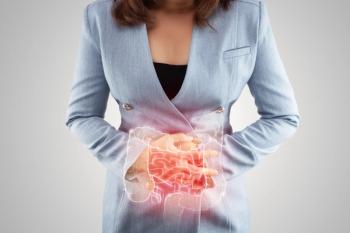
Frequently Asked Constipation Questions and How to Address Them
We talked to 2 pharmacists to see how they address the most common questions around constipation.
Constipation is one common condition where pharmacists can provide assistance to patients.
As knowledgeable and accessible health care professionals, pharmacists are in a unique position to help patients with acute constipation with OTC medication selection or referral to a physician if necessary.
We talked to 2 pharmacists to see how they address the most common questions around constipation. Of course, since each patient has a different medical history, before making a recommendation, ask the patient about medical conditions and medications they take, including prescription, OTC, and vitamins.
1. What is the best OTC medication for constipation in adults?
Jill Caracci, PharmD, is a pharmacist at Sterling Pharmacy in Independence, Missouri.
She explained that the OTC treatment of choice for adults varies depending on the cause. “In idiopathic constipation, [constipation not due to diet, medications, medical conditions, pregnancy, or activity level] I would suggest an osmotic agent such as polyethylene glycol (MiraLAX; Bayer). Mix 17 grams of the polyethylene glycol in 8 ounces of water and drink daily,” she said.
However, if the patient’s constipation is associated with pregnancy, Caracci suggests a fiber product such as psyllium husk (Metamucil; Procter and Gamble).
For opioid-induced constipation, Caracci recommends a combination stool softener/stimulant laxative such as Senna-S, or bisacodyl (Dulcolax; Boehringer Ingelheim Pharmaceuticals Inc) with docusate sodium (Colace; Pharmacal Corporation).
2. I need to go right away. What should I take?
Sara Shelley, PharmD, is the pharmacy manager at Corner Drug Co. in Woodland, California. For quick relief in adult patients, Shelley recommends a Fleet enema. However, if the patient does not want to use an enema, “a bisacodyl suppository or oral magnesium citrate are suitable alternatives,” she said.
3. What is a good OTC medication for my child’s constipation?
Caracci suggests consulting the child’s pediatrician in this case. For those who have received a green light from the pediatrician to treat constipation, she suggests a glycerin suppository (Pedia-Lax), especially for small children. "They are generally well-tolerated and often produce results within 30 minutes,” she said. For those children who are older or will not tolerate a suppository, Caracci recommends polyethylene glycol with weight-based dosing.
4. What dietary measures will help my constipation?
“Fiber and water are your friends!” Shelley said. “Increasing your fiber intake, decreasing intake of highly processed foods, and staying adequately hydrated can help constipation.” She recommends increasing dietary intake of high fiber foods, such as fruits, vegetables, whole grains, beans, and nuts.
Shelley advises slowly introducing a fiber supplement like psyllium husk or wheat dextrin (Benefiber; GlaxoSmithKline) for patients who need help getting enough fiber. She also reminds patients that beverages containing caffeine, such as coffee and soda, are dehydrating, so drink sparingly, if at all, when constipated.
5. What warning signs would alert you to something more serious than just general constipation?
Shelley advises her patients to seek medical attention right away if their stools are dark/bloody and tarry, or if they have severe abdominal pain, a distended abdomen, unintentional weight loss, or vomiting. If the patient has general constipation, she recommends contacting the doctor if dietary modifications and OTC medications haven’t helped in 4 or 5 days.
6. How long should I try to treat my constipation before seeing a doctor?
In the absence of warning signs mentioned above or known causes of constipation, Caracci suggests consulting the doctor “if there has been no improvement with OTC treatment after 5 days.”
Ten high-fiber foods to help constipation:
Recommend increasing consumption as tolerated as well as increasing water intake.
High-fiber foods
Fiber content
Avocado
1 avocado = 10 grams of fiber
Beans/legumes such as chickpeas
1/2 cup chickpeas = 6 grams of fiber
Berries
1 cup = 8 grams of fiber
Chia seeds
2 tablespoons = 10 grams of fiber
Fiber-enriched cereal such as Fiber-One
Varies
Guava
1 cup = 9 grams of fiber
Lentils
1/2 cup = 8 grams of fiber
Pear
1 pear = 6 grams of fiber
Prunes
6 prunes = 12 grams of fiber
Whole grains such as barley
1 cup of barley = 9 grams of fiber
Newsletter
Pharmacy practice is always changing. Stay ahead of the curve with the Drug Topics newsletter and get the latest drug information, industry trends, and patient care tips.















































































































